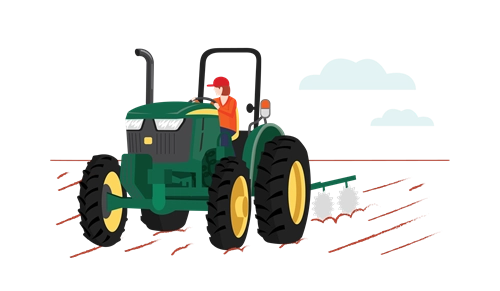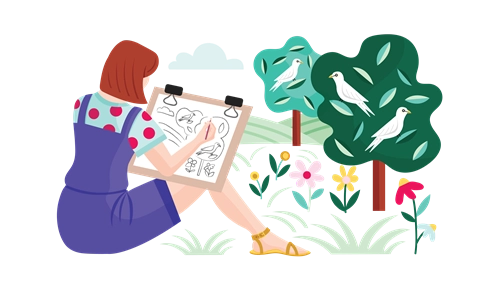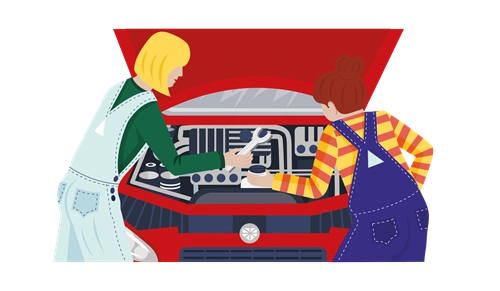-
Curriculum alignment
Curriculum alignment
Design and Technologies
AC9TDE8K01 – Analyse how people in design and technologies occupations consider ethical and sustainability factors to design and produce products, services and environments
AC9TDE8K02 – Analyse the impact of innovation and the development of technologies on designed solutions for global preferred futures
AC9TDE8K06 – Analyse how characteristics and properties of materials, systems, components, tools and equipment can be combined to create designed solutions
Science
AC9S7U02 – Use models, including food webs, to represent matter and energy flow in ecosystems and predict the impact of changing abiotic and biotic factors on populations
AC9S7H03 – Examine how proposed scientific responses to contemporary issues may impact on society and explore ethical, environmental, social and economic considerations
AC9S7I08 – Write and create texts to communicate ideas, findings and arguments for specific purposes and audiences, including selection of appropriate language and text features, using digital tools as appropriate
- S
- T
- E
- M
Engineering solutions for platypus protection
Years 7 and 8
Learning hook
Blending engineering and ecology can lead to advances in conservation. As a class, watch the video Living Seawalls.
Students can learn more about the Living Seawalls project here. Discuss the different specialist knowledges and skills that would be required to conceptualise and enact a project like this.
Living Seawalls is just one example of a collaboration between engineers, ecologists and industrial designers with the aim of conservation. Other Australian conservation collaboration projects include:
- nest boxes
- coral frames
- glider poles
- fish ladders
- seahorse
Girls in focus
Many girls picture engineers as men in hard hats. It’s important to confront those stereotypes and introduce different engineering careers and role models. Other STEM specialists frequently collaborate with engineers to develop their ideas. For example, Australian coral biologist Dr Taryn Foster founded the company Coral Maker and collaborated with engineers at Autodesk to develop coral frames. Read more about the collaboration.
Learning input
Conservation projects consider the needs of multiple stakeholders. The Living Seawall project shows that human infrastructure can be designed to have less impact on marine organisms.
One Australian animal that is increasingly negatively affected by human activity is the platypus. Platypuses are endemic to rivers and creeks of eastern Australia from Cooktown to Tasmania, with a small introduced population on Kangaroo Island. Severe reduction and even apparent extinction of some platypus populations have been documented in recent decades (for instance by the Australian Platypus Conservancy) and the overall decline in numbers has led to the platypus being listed as ‘near threatened’.
How many of your students have seen a platypus in the wild?
You can check if platypuses have been sighted near your school using this map from the Platy Project, which shows recent and historic sightings of platypuses.
If your students haven’t seen a platypus in the wild, they may be interested in checking out the Platycam livestream of the Grange Burn in Hamilton, Victoria, Gunditjmara Country. Note that the best viewing times are from 6am to 8am and 6pm to 8pm, so this might be a good home viewing opportunity.
Girls in focus
Context-based learning has been shown to engage girls in STEM, and local relevance can also be important. If platypuses have never been sighted in your locality, you may want to use this lesson structure as a guide but select a more relevant local species as the focus. Examples of engineering for conservation of different species are included in the Resources section.
Students can watch The platypus guardian documentary to develop an understanding of platypus behaviour and threats to platypus populations.
As a class, compile a list of the threats to platypus populations, including both biotic and abiotic threats. The list should include:
- litter in water ways
- dams
- polluted run-off from washing cars
- polluted grey water from household chemicals
- introduced predators (foxes, cats and dogs)
- loss of habitat through land clearing
Learning input
Engineers can play an important role in slowing and hopefully reversing the decline in platypus numbers in eastern Australia. Challenge students to think like ecological engineers and design interventions to improve platypus habitats. Students will produce a Platypus Recovery Plan for a local creek. If there isn’t a local creek with historic or current sightings, the class could focus on the Hobart Rivulet, basing their ideas on The Platypus Guardian documentary.
Explain that the report will be submitted to local council, and will be designed to persuade the council to invest in creek infrastructure that will improve platypus habitat and increase population numbers. Students will work in teams, and take on the roles of different STEM specialists to develop the recovery plan.
Roles should include:
- platypus ecologists – experts in platypus environmental needs and threats
- environmental engineers – experts in ensuring the sustainability of natural ecosystems and urban environments
- hydrology engineers – experts in controlling water and managing water quality
- structural engineers – experts in building and infrastructure, with a focus on construction design to ensure it can withstand all loads and forces.
Girls in focus
Research shows that girls value collaborative learning so it is important to reinforce the collaborative nature of STEM careers, particularly when addressing multifaceted problems. By providing group members with clear roles and expertise, students can engage in a real-world scenario of collaborative STEM problem-solving.
The report will need to include:
- the current and historic status of platypus populations
- platypus environmental requirements (biotic and abiotic)
- platypus environmental threats (biotic and abiotic)
- a current site evaluation as platypus habitat
- proposed infrastructure or engineering solutions to improve platypus habitat.
Students may like to consider engineering solutions that:
- improve water quality
- improve the structure of waterways and waterside vegetation (for example, the construction of log jams to help reduce bank erosion and create refuges)
- mitigate the effect of dams
- reduce litter in water ways.
As a class, view this Platypus Recovery Plan for some inspiration and notice key features of the text, such as text structure, voice used, images and diagrams, tables, bulleted lists and references.
Support students to structure their text by designing a class template for their report and discussing the purpose of each section.
Students can begin their research using the websites listed in the Resources section. They should consider the appropriateness of different interventions for their local site. If possible, it would be useful to visit the local creek site and collect observations about the current environment before designing the recovery plan.
-
Rubric
Criteria
Beginning
Achieved
Exceeded
Context
Report identifies current population status and some threats to the population.
Report identifies current population status, historic changes in the population and potential future threats.
Report identifies current and historic population status, and clearly links environmental changes to population change, including making reasonable predictions about future populations.
Recommendations
Report includes some actionable recommendations that will improve platypus habitat.
Report includes a range of recommendations that address multiple threats and will improve platypus habitat.
Report considers a range of stakeholders when providing recommendations that address multiple threats and will improve platypus habitat.
Report
Report communicates some recommendations, including selection of some appropriate content, language and text features.
Report clearly communicates reasonable recommendations including appropriate use of content, language and text features.
Report communicates reasonable recommendations effectively, including selection of persuasive content, language and text features.
Group work
Each group member completes a component of the project.
The group collaborates to utilise each member’s expertise in designing the recovery plan.
The group collaborates to utilise each member’s expertise to improve each section of the report and design a comprehensive recovery plan.
Resources
- Platypus conservation WWF Platypus
- Rivers of Carbon
- Fragmentation by major dams and implications for the future viability of platypus populations
- Platypus Conservation Initiative
- Victoria State Government: – Helping Platypus Recover
- Australian Platypus Conservancy
- Platypus Management Guidelines
- Coral frames Coral Maker
- BBC News – Robots are trained to help revive coral reefs
- Seahorse hotels The Conversation – To save these threatened seahorses, we built them 5-star underwater hotels
- UTS – New ‘hotels’ a suite haven for baby seahorses
- Glider poles The Conversation – Glide poles: the great Aussie invention helping flying possums cross the road
- Australian Geographic – Installation of wooden poles could save Aussie gliders
Download lesson










